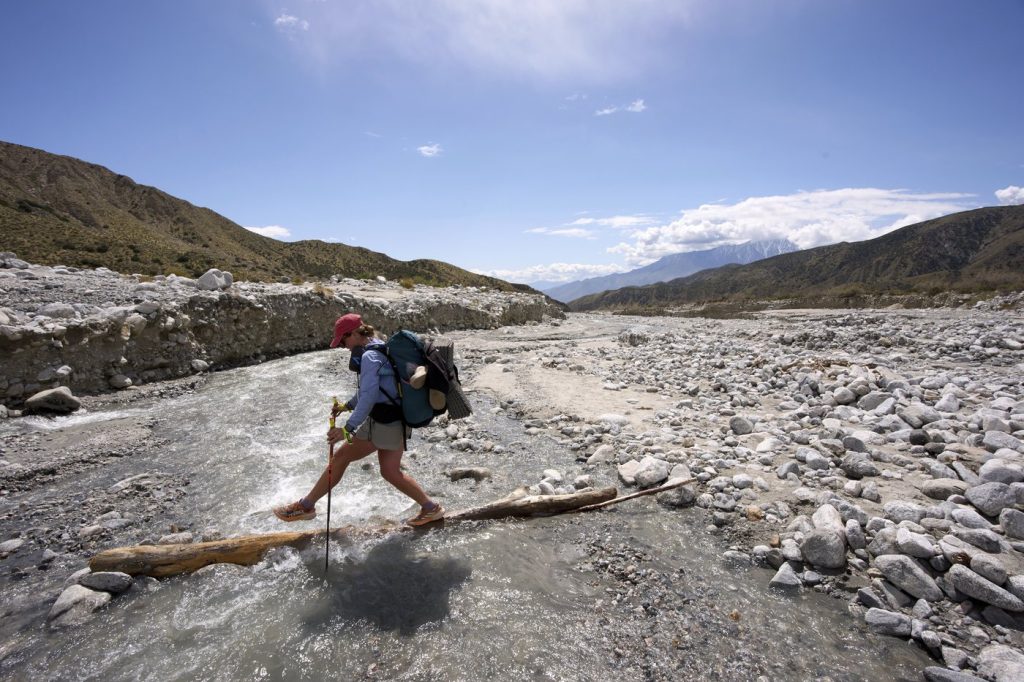CAMPO, Calif. (AP) — Hiking the Pacific Crest Trail (PCT) is an arduous undertaking, particularly for those attempting to journey from Southern California to Canada. As hikers prepare to embark on this 2,650-mile trek, Eric Kipperman’s role is to welcome them and highlight the challenges that lie ahead. Recently, he has started to deliver a stern message regarding the trail's increasing difficulties.
Kipperman pointed out that due to budget cuts from the Trump administration, critical plans for clearing downed trees and restoring storm-damaged sections of the trail slated for 2025 have been canceled. "This year, we're going to have less trail work done on the trails, so just know that going into your hike, safety is the most important thing," he informed a group of hikers from Europe and the United States at the trailhead near Campo, California, located about an hour's drive east of San Diego.
He further stressed that in some areas, hikers will encounter "no trail" at all along the PCT, which extends through California, Oregon, and Washington state. The funding cuts are not limited to the West Coast; similar disruptions in repairs are affecting the Appalachian Trail (AT) on the East Coast, especially after about 500 miles were damaged by Hurricane Helene. This situation exemplifies how the Trump administration's drastic downsizing of the federal government has impacted even the nation’s remote wilderness areas.
The Pacific Crest Trail Association and the Appalachian Trail Conservancy, organizations responsible for the trails' upkeep in conjunction with the government, have voiced concerns that federal funding cuts jeopardize the trails’ very existence. Both wildfires and increasingly severe storms, attributed to climate change, have already taken a toll on these iconic paths. The U.S. Forest Service described the situation as "dynamic and evolving" but affirmed its commitment to public safety and recreational access, which are crucial for local economies.
The Trump administration has resulted in the loss of approximately 3,400 positions at the U.S. Forest Service and nearly 1,500 at the National Park Service, including skilled workers who specialize in trail repairs. These reductions have also led to seasonal job offers being retracted, affecting crews that usually manage vital repair tasks like restoring boardwalks and bridges. Although legal action has mandated the rehiring of some federal workers, many remain absent from their positions.
Justin Kooyman, director of Pacific Crest Trail operations, articulated the practical consequences for hikers due to these federal cuts: "They’re going to be crawling, navigating, working their way through downed trees across the trail that won’t get cut out. It’s going to make for a little more rough and tumble." While not all segments of the trails are in ruin, maintenance is seen as essential to preserving them. Over 20 miles of the Appalachian Trail remain closed post-Hurricane Helene, and downed trees could increase wildfire risks.
Last month marked the 100th anniversary of the Appalachian Trail, a footpath of 2,193 miles linking Georgia's Springer Mountain to Maine's Mount Katahdin. Its foundation was laid by forest scientist Benton MacKaye, who envisioned a refuge from stress following World War I and the 1918 flu pandemic. As the nation’s first National Scenic Trails, the Appalachian and Pacific Crest Trails symbolize resilience and have inspired countless narratives, including popular books and movies. However, only a small percentage of hikers attempt to complete the entire trails, often facing significant risks.
Sandi Marra, head of the Appalachian Trail Conservancy, voiced her concern over the diminishing appreciation for protected outdoor spaces, emphasizing their importance not just for physical health but for spiritual well-being as well. "If we lose these things, we are really going to be lost as a species, and definitely as a country," she said. Presently, the Pacific Crest Trail Association operates with a third less federal grant money than expected, while the Appalachian Trail Conservancy reports that at least $1.5 million in funding is at risk due to federal downsizing.
The National Park Service maintains that funding for the Appalachian Trail is ongoing, as they strive to collaboratively tackle the challenges that affect its legacy. Nonetheless, both trails were already coping with a backlog of necessary projects. In recent years, wildfires have burned nearly 250 miles of the Pacific Crest Trail, undermining its conditions and facilitating the spread of invasive plant species, which could lead to increased maintenance costs.
The Pacific Crest Trail traverses harsh desert terrain, serene sequoia forests, and snow-capped Sierra Nevada peaks before concluding in Washington's Pasayten Wilderness at the Canadian border. Its rising popularity, fueled by social media and the memoir "Wild," led the association to create the role of "crest runners." Kipperman, one of the two runners stationed at the southern terminus, plays a vital role in welcoming hikers, checking permits, and offering safety advice.
This year, Kipperman is only scheduled to operate at the southern terminus until mid-May, unlike the previous year when there were also representatives at the northern terminus. Despite the cuts, he remains upbeat, discussing the importance of water quality and fire safety while guiding hikers about preparation and respect for the environment.
After Kipperman's briefing, many hikers expressed their plans to contribute to trail restoration efforts, including Joshua Suran, while German hiker Marias Michel, who views the trail as a form of personal detox, expressed his intent to focus on the experience rather than the larger issues affecting the trail. "I'm just going to be learning by doing because I don't want to be too much up here," he said, referencing the mental challenges of the hike.










